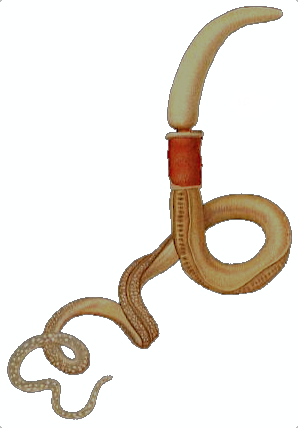Nephrozoa
Nephrozoa is a major clade within the animal kingdom, encompassing the vast majority of animals, including the Bilateria, which are animals with bilateral symmetry and three germ layers. This group is significant for its inclusion of almost all complex multicellular organisms known in the animal kingdom, excluding only a few primitive forms such as sponges and comb jellies. The Nephrozoa are distinguished by the presence of a specialized excretory organ known as the nephridium, which plays a crucial role in the osmoregulation and excretion processes within these organisms.
Classification
The Nephrozoa is divided into two major subgroups: the Protostomia and the Deuterostomia. Protostomes, which include groups such as arthropods, mollusks, and annelids, are characterized by their embryonic development, where the mouth develops before the anus. Deuterostomes, including chordates (which encompass all vertebrates) and echinoderms, have the opposite developmental sequence, with the anus developing before the mouth.
Protostomia
- Ecdysozoa: This group includes animals that molt their exoskeletons, such as arthropods and nematodes.
- Lophotrochozoa: Characterized by the presence of a lophophore feeding structure or trochophore larval stage, this group includes mollusks, annelids, and several other phyla.
Deuterostomia
- Chordata: Animals with a notochord, dorsal nerve cord, pharyngeal slits, and post-anal tail at some stage of development. This group includes all vertebrates.
- Echinodermata: Marine animals known for their radial symmetry in adulthood and include starfish, sea urchins, and sea cucumbers.
- Hemichordata: This group includes acorn worms and pterobranchs, which share some features with chordates.
Evolutionary Significance
Nephrozoa is a critical group for understanding the evolutionary history of animals. The divergence between Protostomia and Deuterostomia marks a significant evolutionary event, leading to the development of complex body plans and organ systems. The evolution of the nephridium for excretion and osmoregulation is a key adaptation that has allowed Nephrozoa to occupy a wide range of ecological niches and become one of the most successful groups of organisms on Earth.
Anatomical and Physiological Features
The defining feature of Nephrozoa is the presence of nephridia, which are excretory organs that help in the removal of metabolic wastes and the regulation of water and salt balance. The structure and complexity of nephridia can vary significantly among different nephrozoan groups, reflecting the diversity of habitats and life histories within this clade.
Research and Study
Research into Nephrozoa encompasses a wide range of disciplines, including genetics, developmental biology, paleontology, and ecology. Studies on the genetic and developmental mechanisms underlying the diversity of body plans and organ systems in Nephrozoa are particularly important for understanding the evolution of complex multicellular life.
Transform your life with W8MD's budget GLP-1 injections from $125.
W8MD offers a medical weight loss program to lose weight in Philadelphia. Our physician-supervised medical weight loss provides:
- Most insurances accepted or discounted self-pay rates. We will obtain insurance prior authorizations if needed.
- Generic GLP1 weight loss injections from $125 for the starting dose.
- Also offer prescription weight loss medications including Phentermine, Qsymia, Diethylpropion, Contrave etc.
NYC weight loss doctor appointments
Start your NYC weight loss journey today at our NYC medical weight loss and Philadelphia medical weight loss clinics.
- Call 718-946-5500 to lose weight in NYC or for medical weight loss in Philadelphia 215-676-2334.
- Tags:NYC medical weight loss, Philadelphia lose weight Zepbound NYC, Budget GLP1 weight loss injections, Wegovy Philadelphia, Wegovy NYC, Philadelphia medical weight loss, Brookly weight loss and Wegovy NYC
|
WikiMD's Wellness Encyclopedia |
| Let Food Be Thy Medicine Medicine Thy Food - Hippocrates |
Medical Disclaimer: WikiMD is not a substitute for professional medical advice. The information on WikiMD is provided as an information resource only, may be incorrect, outdated or misleading, and is not to be used or relied on for any diagnostic or treatment purposes. Please consult your health care provider before making any healthcare decisions or for guidance about a specific medical condition. WikiMD expressly disclaims responsibility, and shall have no liability, for any damages, loss, injury, or liability whatsoever suffered as a result of your reliance on the information contained in this site. By visiting this site you agree to the foregoing terms and conditions, which may from time to time be changed or supplemented by WikiMD. If you do not agree to the foregoing terms and conditions, you should not enter or use this site. See full disclaimer.
Credits:Most images are courtesy of Wikimedia commons, and templates, categories Wikipedia, licensed under CC BY SA or similar.
Contributors: Prab R. Tumpati, MD





